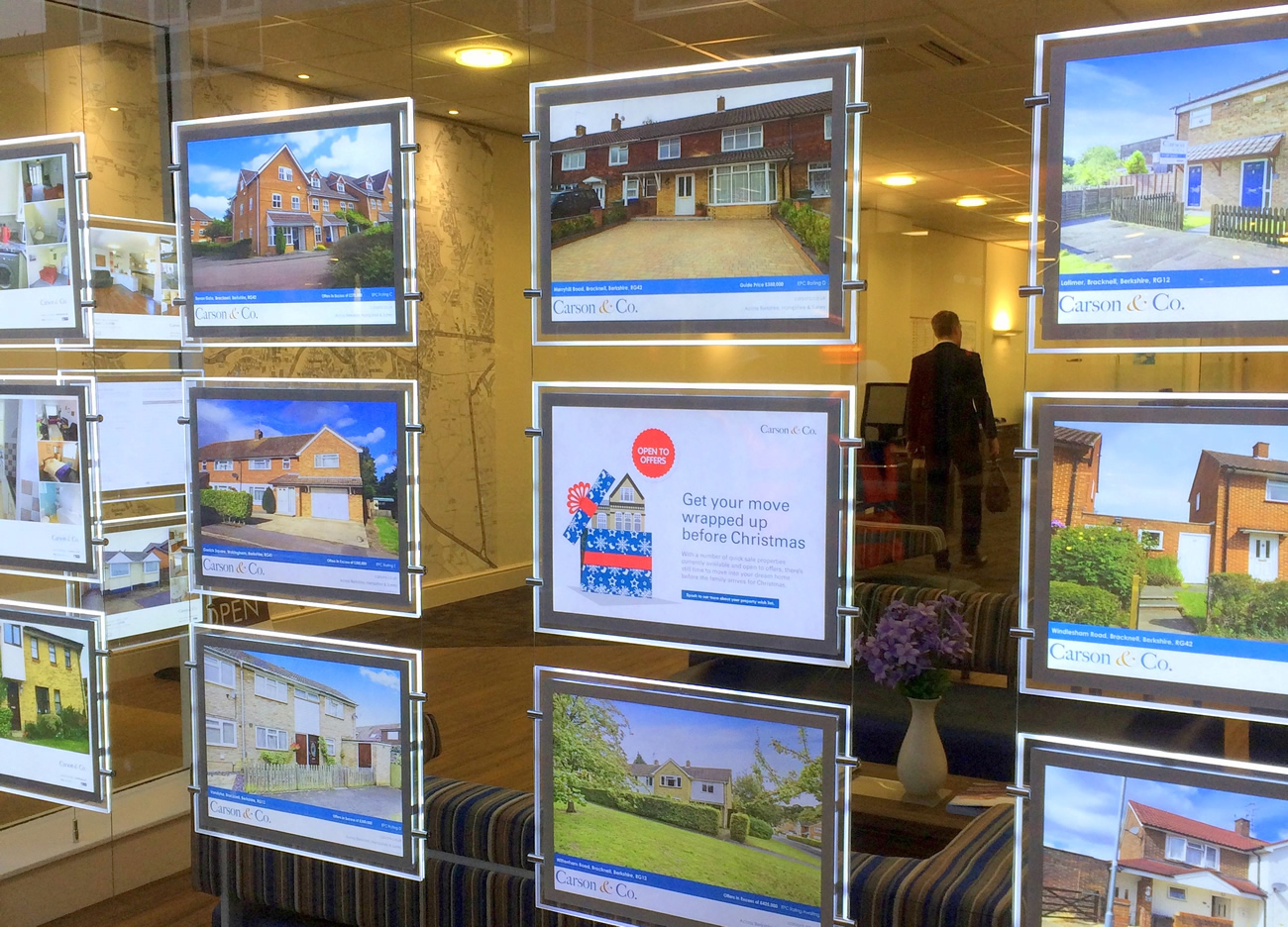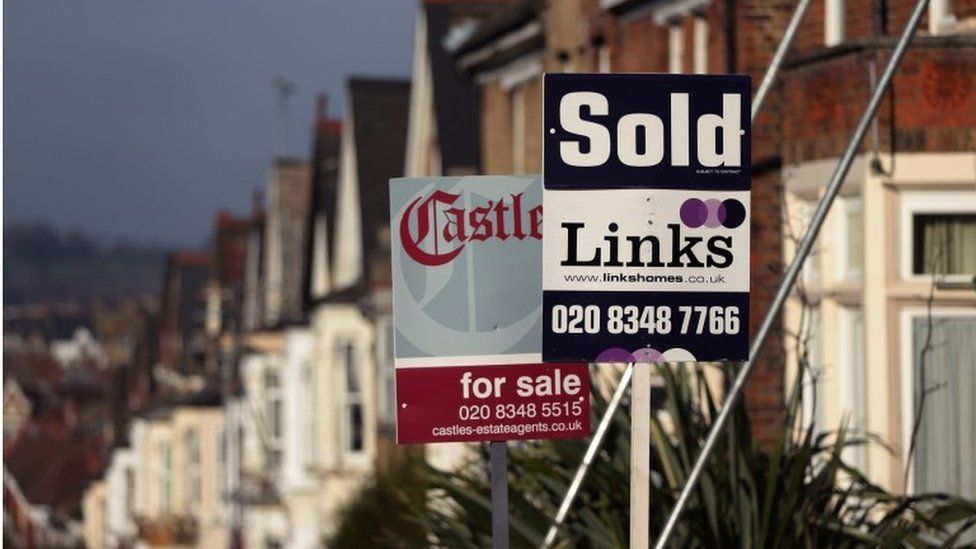Property values increased by 1.1% month-on-month in February but are down by £8,000 overall from their August peak, according to mortgage lender Halifax.
Annual price growth remained frozen at 2.1% for the third consecutive month, the building society added. The average UK house price in February was £285,476. Mortgage rates jumped last autumn following September’s mini-budget, and the mortgage market later showed signs of settling. Bank of England base rate rises have also been putting upward pressure on borrowing costs.
Kim Kinnaird, director, Halifax Mortgages, said, "recent reductions in mortgage rates, improving consumer confidence, and a continuing resilience in the labour market are arguably helping to stabilise prices following the falls seen in November and December. Still, with the cost of a home down on a quarterly basis (by 2.5%), the underlying activity continues to indicate a general downward trend. In cash terms, house prices are down around £8,500 (2.9%) on the August 2022 peak but remain almost £9,000 above the average prices seen at the start of 2022 and are still above pre-pandemic levels, meaning most sellers will retain price gains made during the pandemic. With average house prices remaining high, housing affordability will continue to feel challenging for many buyers.Estate agents across the UK have seen a small drop in the number of sales being agreed, while the number of new properties coming to market has remained the same. "Increases to interest rates have caused buyers to rethink their budget and haggle on price, but the drive evidently still remains to see their purchase through and move home."
Tom Bill, head of UK residential research at estate agent Knight Frank, said,"the UK housing market appears near the end of a long hangover from the mini-budget rather than on the verge of a price plunge. Activity stopped well before Christmas due to the mortgage market turmoil but has picked up this year as people come to terms with where rates are settling."
Marie Johnstone, managing director at Edinburgh-based estate agents Wilson Property Group, said, "February was a far busier month than January."
Marc von Grundherr, director of estate agent Benham and Reeves, said, "while current house price performance may remain sluggish when compared to the meteoric rates of the pandemic market boom, there’s been a notable uptick in activity in 2023 and this has reversed the rot seen during the back end of last year."
Mark Harris, chief executive of mortgage broker SPF Private Clients, said, "lenders continue to jockey for position, with a number increasing the pricing of their cheapest five-year fixes. "However, even if there is another base rate rise this month, there is a growing expectation that rates are close to their peak, and if inflation also continues to fall, the outlook appears brighter for borrowers."
Annual growth rate slows in all nations and regions
The February Halifax House Price Index also revealed a slowing in annual growth rate in all UK nations and regions, most significant of which was observed in the North East, at 1.1% growth in February versus a rise of 3.6% in January. Homes now cost an average of £163,953 in that region.
Average house prices in London are now £526,842, down by 0.9% over the last year. Despite this slowdown, homes in London still cost over £240,000 more than the UK national average.
Annual growth fell the least in Scotland, where house prices now average £198,779, with a growth rate of 2.2% compared with 2.3% in January. Similarly in Wales, annual growth in February was 1.2% versus 1.9% in the previous month, with homes costing £210,917 on average.
Those purchasing a home in Northern Ireland will now pay £185,009 on average, with an annual growth rate of 5.7%, compared with the 7% in January.
Flats see an annual price fall
Halifax reported that prices of flats have been in negative territory over the past 12 months, with -0.3% annual growth. Meanwhile, prices for terraced properties have broadly stagnated at 0.3%.
Prices of detached properties have increased by just 1.5% on the year, the lowest rise since the end of 2019.

Falling house prices may seem like a good thing – but it’s renters who are paying the price
With UKK house prices falling in the year to February to reach their lowest level for over a decade. The drivers are clear: inflation and rising interest rates are combining to put off mortgage borrowers. Approvals are at the lowest rate since 2009.
Without hefty government intervention, the current negative trajectory will continue. If inflation remains above wage growth, buyer confidence will remain low. On the other hand, if wages start to accelerate, the Bank of England will almost certainly ramp up interest rates to avoid further inflation, which will also dampen the demand for mortgages.
Falling prices may seem like a good thing: the average home in England currently costs around nine times the average annual disposable household income. However, they would have to fall by a massive amount to return to the level of affordability – around 4.5 times income – that preceded the last major bubble of the late 1990s. Such a collapse would almost certainly cause a financial crisis and disastrous recession.
Related: City mayors call for rent freeze and eviction ban for England’s tenants
A more gradual decline in prices is the more likely outcome. Buyers without big deposits will continue to lose out due to high mortgage rates and post-crisis regulation sensibly limiting risky lending. The market will carry on favouring existing homeowners who can access lower mortgage rates and cash-buying investors seeking somewhere to park their wealth. The proportion of people continuing to rent – in a private rented sector characterised by low-quality, insecure tenures – will continue to rise and home ownership to decline.
And it is renters who will continue to suffer most from current conditions. Landlords are ramping up rents to compensate for rising interest rates on their mortgages. Or they may sell up: there is evidence of landlords exiting the buy-to-let market, which may reduce the stock of rental properties available. Owners may sell up or switch to short-term holiday lets, which bring higher yields. Either way, the supply of decent, affordable rental property will deteriorate.
New supply is also being hit as the private construction sector business model is based on selling developed land at a higher value than it was originally purchased for. Already we are seeing signs of the mothballing of development sites as house prices fall. Housing associations are also cutting back as their budgets come under increasing post-pandemic pressure.
Every previous crisis since the 1980s has seen a similar policy response: subsidies for would-be homeowners, whether in the form of equity loans, subsidised mortgages or tax breaks to reflate the housing market. These policies have helped developers, landlords and banks, whose business models depend on ever increasing property prices. But they have done nothing to address the affordability problems for both first-time homeowners and renters. Rather, demand-side subsidies like help to buy push up house prices, lifting them further out of the reach of those on lower incomes.
What could be done differently this time?
Rather than driving up demand and inflating house prices, steps could be taken to increase the supply of good quality, affordable housing, in particular for renters.
In the short term, the government could explore more innovative options to convert planned or existing stock into affordable rental properties, as suggested by the New Economics Foundation and the Joseph Rowntree Trust. The latter argues that stalled developments could be acquired by the government and converted into socially rented housing, enabling a more rapid build-out rate than the private sector is capable of.
The government should also consider giving city councils the power to purchase buy-to-let properties from landlords seeking to exit the market and, where needed, upgrade them and make them available for social rent. Such policies are being undertaken with considerable success in other European cities, such as Berlin, Paris and Barcelona.
In the latter, following the enactment of a public sector right to first refusal when rental housing is sold, the city has acquired 1,324 units by investing €145m (£128m) so far, buying existing buildings in the city centre, correcting geographical imbalances and stopping speculative investments.
These policies will only be effective in the longer term with wider reforms that rebalance market power away from landlords and investors. The obvious place to start is reform of a property taxation system that incentivises speculative investment. Much more punitive taxes on second homes and short-term holiday lets would free up property for renters at more affordable prices, and should stop investors taking advantage of the current falls in house prices by snapping up properties on the cheap. There should also be a major new investment in socially rented housing and more secure long-term contracts in the private rented sector.
The UK housing market is currently rigged in favour of homeowners, investors, banks and private developers focused on investing in housing as a financial asset. The latest downturn is a huge opportunity to reverse this dynamic – and prioritise the right to secure affordable homes for all.

